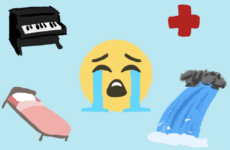When students and faculty shifted to remote learning in the spring term of last year, no one could predict the challenges of the year to come. Over a year later, as we look forward to potentially maskless and closer-than-six-feet life, many teachers are considering ways to implement some of the methods they have learned into their post-pandemic classrooms.
For one, many departments agree that remote learning came with surprising benefits. In terms of academic life, many enjoy the new advising block on Mondays for students and the 60-minute class schedule that allows daytime classes to wrap up at 2:30 p.m.
In addition, according to Director of Studies Mr. Kevin Rogers, the night-time H and I blocks allow for smaller classes than in pre-pandemic years, and many students enjoyed that higher level of classroom intimacy. Although the schedule for next year will revert back to a pre-pandemic schedule with 70-minute-long classes and no night classes, Mr. Rogers said, “We continue to look at ways we can optimize the schedule. When we are looking for things that we might carry on in the future, we are looking at things that we’ve really enjoyed about the current schedule.”
In terms of student life, the Student Activities Center held much of their fall programming virtually — including club meetings, Club Fair, and leadership training. Once students came out of quarantine, more in-person programming was feasible, but students now needed to sign up for events in advance to ensure that social distancing would be possible. However, the virtual aspect of student life did provide some benefits.
“One of the most successful things I saw this year was in the spring when we hosted a club fair for accepted families,” said Assistant Director of Student Activities Ms. Colleen Kazar. Typically, the spring revisit day club fair happens in person for families at the SAC. This year, the School’s virtual revisit day programming featured a virtual panel with club leaders and Zoom Q&A booths for individual clubs.
“It was incredibly successful,” said Ms. Kazar. “We got some great feedback from admissions, families, and students. Whether we get club fair in-person or virtual next year, [we] will be able to host a virtual student panel or virtual programming, in addition to in person things, [to] give access to people who aren’t here on campus. ”
Perhaps the most significant pandemic-induced change — remote learning — could be here to stay, too. “As far as remote learning, at times it might be a good idea to have that available,” said Medical Director Dr. Miriam Cohen. She continued, “Say you’re not feeling well, and you’re in the health center. You could actually Zoom into classes if you’re feeling up to going to classes but not physically.”
Dr. Cohen also appreciated the increased collaboration that came out of this year. “I spent the year collaborating with many different faculty and staff members on campus in ways which typically I wouldn’t do,” she said. She hopes that people continue to utilize virtual platforms, like Zoom and FaceTime, to collaborate and connect after the pandemic.



